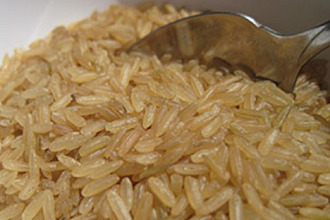Whether you exercise to lose weight, to reach a fitness goal, or dare we say it just for fun, exercise changes you.
The red face, the sweating, a pounding heart and pumping lungs, a boost in your alertness and mood, we all know that staying physically active is essential to living a long, healthy, and productive life, and although we do not often understand exactly what’s happening behind the scenes. A group of experts take us through — from head to toe — what happens in the body when we exercise. Co-director of the Mayo Clinic Sports Medicine Center spill the beans on what gets and keeps you moving. This includes changes in your:
Which use glucose and ATP for contraction and movement. To create more ATP, your body needs extra oxygen, so breathing increases and your heart starts pumping more blood to your muscles. Without sufficient oxygen, lactic acid will form instead. Tiny tears in your muscles make them grow bigger and stronger as they heal.
As your muscles call for more oxygen (as much as 15 times more oxygen than when you're at rest), your breathing rate increases. Once the muscles surrounding your lungs cannot move any faster, you've reached what's called your VO2 max—your maximum capacity of oxygen use. The higher your VO2 max, the fitter you are.
As mentioned, your heart rate increases with physical activity to supply more oxygenated blood to your muscles. The fitter you are, the more efficiently your heart can do this, allowing you to work out longer and harder. As a side effect, this increased efficiency will also reduce your resting heart rate. Your blood pressure will also decrease as a result of new blood vessels forming.
The increased blood flow also benefits your brain, allowing it to almost immediately function better. As a result, you tend to feel more focused after a workout. Furthermore, exercising regularly will promote the growth of new brain cells. In your hippocampus, these new brain cells help boost memory and learning. As stated in the featured article:
"When you work out regularly, your brain gets used to this frequent surge of blood and adapts by turning certain genes on or off. Many of these changes boost brain cell function and protect from diseases such as Alzheimer's, Parkinson's or even stroke, and ward off age-related decline."
A number of neurotransmitters are also triggered, such as endorphins, serotonin, dopamine, glutamate, and GABA. Some of these are well-known for their role in mood control. Exercise, in fact, is one of the most effective prevention and treatment strategies for depression.
as exercise can place as much as five or six times more than your body weight on them. Peak bone mass is achieved in adulthood and then begins a slow decline, but exercise can help you to maintain healthy bone mass as you get older. Weight-bearing exercise is actually one of the most effective remedies against osteoporosis, as your bones are very porous and soft, and as you get older your bones can easily become less dense and hence, more brittle - especially if you are inactive.
Neurotransmitters, chemical messengers in your brain, such as mood-boosting serotonin, are released during a bout of exercise, that doesn't account for all the benefits your brain reaps. "If you start exercising, your brain recognizes this as a moment of stress. As your heart pressure increases, the brain thinks you are either fighting the enemy or fleeing from it. To protect yourself and your brain from stress, you release a protein called BDNF (Brain-Derived Neurotrophic Factor).
This BDNF has a protective and also reparative element to your memory neurons and acts as a reset switch. That's why we often feel so at ease and like things are clear after exercising," Simultaneously, your brain releases endorphins, another stress-related chemical. According to researcher MK McGovern, the endorphins minimize the physical pain and discomfort associated with exercise. They're also responsible for the feeling of euphoria that many people report when exercising regularly.
Scientists have been linking the benefits of physical exercise to brain health for many years, but recent research has made it clear that the two aren't just simply related; rather, it is THE relationship. The evidence shows that physical exercise helps you build a brain that not only resists shrinkage, but increases cognitive abilities. Exercise encourages your brain to work at optimum capacity by causing your nerve cells to multiply, strengthening their interconnections, and protecting them from damage. There are multiple mechanisms at play here, but some are becoming more well-understood than others.
The rejuvenating role of BDNF is one of them. BDNF activates brain stem cells to convert into new neurons. It also triggers numerous other chemicals that promote neural health. Further, exercise provides protective effects to your brain through: The production of nerve-protecting compounds. Improved development and survival of neurons. Decreased risk of heart and blood vessel diseases. Altering the way damaging proteins reside inside your brain, which appears to slow the development of Alzheimer's disease.
Growing evidence indicates that both fasting and exercise trigger genes and growth factors that recycle and rejuvenate your brain and muscle tissues. These growth factors include BDNF, as just mentioned, and muscle regulatory factors, or MRFs.
These growth factors signal brain stem cells and muscle satellite cells to convert into new neurons and new muscle cells respectively. Interestingly enough, BDNF also expresses itself in the neuro-muscular system where it protects neuro-motors from degradation. (The neuromotor is the most critical element in your muscle. Without the neuromotor, your muscle is like an engine without ignition. Neuro-motor degradation is part of the process that explains age-related muscle atrophy.)
So BDNF is actively involved in both your muscles and your brain, and this cross-connection, if you will, appears to be a major part of the explanation for why a physical workout can have such a beneficial impact on your brain tissue. It, quite literally, helps prevent, and even reverse, brain decay as much as it prevents and reverses age-related muscle decay.
This also helps explain why exercise while fasting can help keep your brain, neuro-motors, and muscle fibers biologically young. For more information on how to incorporate intemittent fasting into your exercise routine for maximum benefits, please see this previous article. Sugar suppresses BDNF, which also helps explain why a low-sugar diet in combination with regular exercise is so effective for protecting memory and staving off depression.
BDNF and endorphins are two of the factors triggered by exercise that help boost your mood, make you feel good, and sharpen your cognition. They're similar to morphine and heroin in their action and addictiveness— but without any of the harmful side effects. Quite the contrary! So, how much do you have to exercise in order to maintain a sunnier disposition and better memory long-term?
According to a 2012 study published in the journal Neuroscience, the "secret" to increased productivity and happiness on any given day is a long-term investment in regular exercise. And a little each day appears to go further than a lot once or twice a week.
"Those who had exercised during the preceding month but not on the day of testing generally did better on the memory test than those who had been sedentary, but did not perform nearly as well as those who had worked out that morning," the authors note. The reasons for this can perhaps be best perceived visually. Take a look at these images, showing the dramatic increase in brain activity after a 20 minute walk, compared to sitting quietly for the same amount of time.
There is a minor caveat, however. The researchers also discovered that exercise does not affect the brains of all people in exactly the same way. Some people, about 30 percent of people of European Caucasian descent, have a BDNF gene variant that hinders post-exercise BDNF production. The people with this BDNF variant did not improve their memory scores, even when exercising regularly, as significantly as those without this variant. Still, the research clearly suggests that—with individual variations as to the degree—regular exercise will cumulatively enhance your memory and other brain functions.
If you are sedentary there is hope for you. In her book, The First 20 Minutes: Surprising Science Reveals How We Can Exercise Better, Train Smarter, Live Longer, New York Times bestselling author Gretchen Reynolds addresses the issue of exercise as a way to improve longevity and happiness as well.
"The first 20 minutes of moving around, if someone has been really sedentary, provide most of the health benefits. You get prolonged life, reduced disease risk - all of those things come in in the first 20 minutes of being active," "Two-thirds of Americans get no exercise at all. If one of those people gets up and moves around for 20 minutes, they are going to get a huge number of health benefits, and everything beyond that 20 minutes is, to some degree, gravy. That doesn't mean I'm suggesting people should not exercise more if they want to. You can always do more. But the science shows that if you just do anything, even stand in place 20 minutes, you will be healthier."
Similarly, research published in 2008 found that those who exercised on work days experienced significantly improved mood on days that they exercised. Interestingly, while their mood remained fairly constant even on non-exercise work days, their sense of inner calm deteriorated on those days. "Critically, workers performed significantly better on exercise days and across all three areas we measured, known as mental-interpersonal, output and time demands."
72 percent had improved time management on exercise days compared to non-exercise days. 79 percent reported improved mental and interpersonal performance in exercise days. 74 percent said they managed their workload better. And those who exercised regularly also reported feeling more than 40 percent more "motivated to work" and scored more than 20 percent higher for concentration and finishing work on time But remember, it is FAR better to exercise regularly. I believe it is also vital to engage in regular movement if you have a sitting job like most of us do, including me. I typically sit in front of a computer for more than 12 hours a day. What I have recently appreciated is that standing up every 10 minutes (with the help of a timer) and engaging in some type of brief exercise, is an enormously powerful habit to minimize the damage of long term sitting.
Ideally, to truly optimize your health, you'll want to strive for a varied and well-rounded fitness program that incorporates a wide variety of exercises. As a general rule, as soon as an exercise becomes easy to complete, you need to increase the intensity and/or try another exercise to keep challenging your body.
Additionally, more recent research has really opened my eyes to the importance of non-exercise movement. Truly, the key to health is to remain as active as you can, all day long, but that doesn’t mean that you train like an athlete for hours a day. It simply means, whenever you have a chance to move and stretch your body in the course of going about your day – do it! And the more frequent, the better. Everything from standing up, to reaching for an item on a tall shelf, to weeding in your garden and walking from one room to another, and even doing dishes counts, just keep moving!” In short, it's physical movement that counts, period. This is what promotes good health benefits by the interaction your body gets with gravity. With that said, I recommend incorporating the following types of exercise into your program: My personal favorites are:
Exercise programs like Interval {Anaerobic} training; Strength training; Pilates/Yoga and Stretching. Dancing, swimming and kickboxing are also enjoyable promoting good health and a strong body. But, don't forget about core exercises and foundation training, as well-as standing up and stretching throughout your day, this improves our circulation, flexibility and better balance.
Interval {Anaerobic} Training: This is when you alternate short bursts of high-intensity exercise with gentle recovery periods. And if you add light weights {such as 5 pounds} during the recovery periods – than this is called working recovery, it's more challenging, but it increases muscle tone and muscle endurance.
Strength Training: Rounding out your exercise program with a strength training routine will ensure that you're really optimizing the health benefits of a regular exercise program. You can also 'rev-up' the intensity by slowing the movements down while lifting the weights.
Core Exercises: Your body has 29 core muscles located mostly in your back, abdomen, and pelvis. This group of muscles provide the foundation for movement throughout your entire body, and strengthening them can help protect and support your back, making your spine and body less prone to injury and helping you gain greater balance and stability.
Foundation Training: Created by Dr. Goodman, and is an integral first step of a larger program he calls “Modern Moveology,” which consists of a catalog of exercises. Postural exercises such as those taught in foundation training are critical not just for properly supporting your frame during daily activities, they also retrain your body so you can safely perform high-intensity exercises without risking injury.
Stretching: My favorite type of stretching is active isolated stretches. With active isolated stretching, you hold each stretch for only two seconds, which works with your body's natural physiological makeup to improve circulation and increase the elasticity of muscle joints. This technique also allows your body to repair itself and prepares you for daily activities.


























